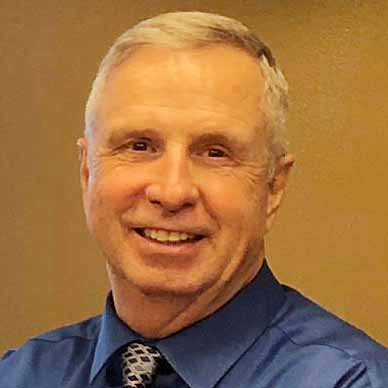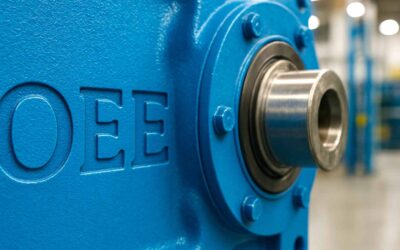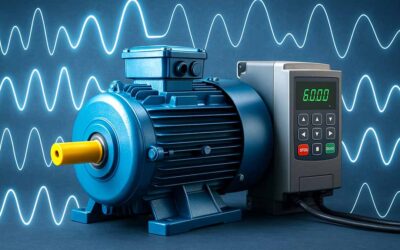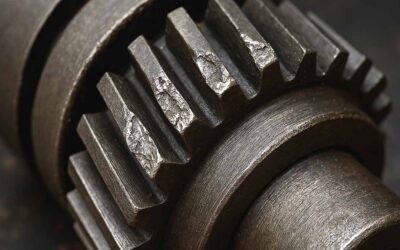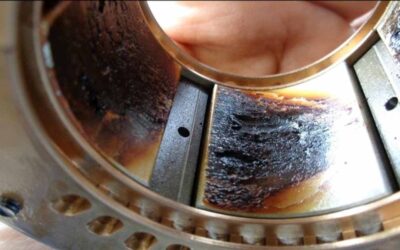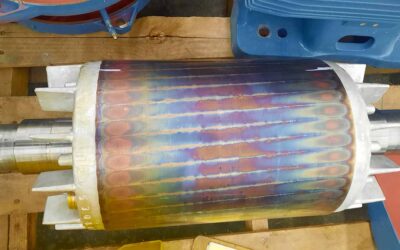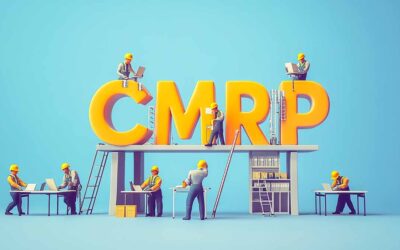The basic principles of lean reliability are eliminating waste, continuous improvement, and team maintenance and operations.
Cutting the Fat: Eliminating Waste in Maintenance
Implementing a proactive asset reliability process presents a tremendous opportunity to eliminate waste. Fundamentally, most people are doing the wrong work. The wrong work is a combination of work done that is too much, too early, or too little, too late. The classic example of the wrong work is justified as “we have always done it this way.” There is a very significant financial opportunity associated with identifying the right work to do.
Most people are doing the wrong work—too much, too early, or too little, too late.
In a reactive environment, maintenance work focuses on repairing failed equipment. In a fully proactive environment, maintenance work focuses on inspections of asset health to enable proactive intervention before failure (see the Figure below).

We need effective work identification capabilities to transition to a proactive asset reliability program. The right work is the minimum amount of work necessary to ensure the asset provides the required level of performance. Since most failures occur randomly and are unrelated to age, other techniques, such as asset health monitoring, are needed to allow intervention before the loss of asset function.
Work identification represents the fundamental shift from conventional time-based maintenance to an asset reliability approach to maintenance. Yet, the answer is not as simple as identifying the right work. In a reactive environment, a binder filled with proactive tasks is not a solution.
The solution must be a proactive process for guiding people’s activity. In addition, to successfully execute the process, employees must be trained in the latest reliability thinking and practices and equipped with tools to manage the data inherent in a proactive environment. Finally, an appropriate change management implementation approach must be used.
Implementing a proactive solution in a reactive culture requires a unique approach that transforms the culture into one asset at a time. Determining the right reliability program for an asset is no easy task. It might seem that the longer a company has been around, the more effective the asset maintenance programs will be. Unfortunately, this is not always true.
The effectiveness of a reliability program has little to do with the number of years a company has been performing maintenance. Most companies perform too much maintenance too soon or too little too late, either of which has cost consequences for the organization. To begin, we must understand how equipment fails.
Redefining Failure: What Reliability Studies Reveal
Reliability studies over the last 30 years say that 80% of asset failures are random. This is quite a departure from what we would expect, yet research has proven that, for most components, there is no correlation between age and how likely they are to fail.
However, with the right practices and technologies, early signs of random failure can be detected by monitoring the health indicators to determine whether asset health is degrading.
The PF interval is the time between detecting a potential failure (P) and functional failure (F); see Figure below. Proactive corrective action is scheduled before functional failure occurs.
A P-F curve (interval), or Potential Failure to Functional Failure curve, is a graph that shows how an asset’s condition changes over time. It’s a tool for predicting when an asset will fail and planning maintenance.

Take a step back and review the way equipment performance is managed. If equipment fails after preventive maintenance or overhauls, something must change. If a preventive maintenance task is not tied to a failure mode (root cause), question why it is done.
If a preventive maintenance task isn’t tied to a failure mode, why are you doing it?
Understand the function of an asset and its operating context; otherwise, efforts are wasted. Understanding this function and its performance requirements can profoundly affect how that equipment is operated and maintained and, hence, can affect the overall reliability of the asset.
This can be a challenging task and the operators and maintainers of the asset need to be involved because they know best what the asset must do to achieve the operating targets.
Preserving Expertise: Capturing Knowledge Before It’s Lost
The imminent aging workforce issue has made asset reliability a hot topic at the executive level of most capital-intensive companies. Executives have recognized the challenge of retaining valuable maintenance operators, and maintenance veterans became intimate with their equipment and could quickly repair it to avoid downtime.
However, this acquired knowledge is rarely documented or transferred to others and will be lost if companies do not systematically collect this vital information on how employees perform their jobs.
The reliability program captures the knowledge of the equipment experts, operators, and maintainers who know the equipment best. In many companies, these employees have worked with the equipment daily for decades, so their knowledge is invaluable.
The challenge is finding a way to store this information so that all employees can use it daily. Reliability software captures this knowledge and makes it available.
When experience walks out the door, so does reliability—capture it before it’s gone.
During the development of the asset reliability program, these maintainers and operators are asked to contribute their knowledge of the ways the asset fails and the ways that have been found to detect or prevent failure.
In the context of a well-defined failure analysis, their knowledge is captured and formalized by linking proactive tasks to specific failure modes. The details previously carried around in personal pocketbooks become readily available as the new asset reliability program is defined and deployed.
It’s not a matter of if the aging workforce issue will affect an organization but when. Do not waste this expertise; do not let it walk out the door.
Act now, or the problem will worsen. By capturing the knowledge of experts within a system, the amount of time wasted each day manually calculating condition data is reduced. For example, the screen in the Figure below captures the calculation to determine the effectiveness of a heat exchanger.
Making Continuous Improvement a Maintenance Standard
Continuous improvement in lean reliability has some fundamental principles that must be met to be successful. Most companies never obtain true continuous improvement because one or more of these basic principles are unmet; thus, the lean effort never succeeds.
These principles include
- Base workflow processes on known best practices and periodically review them.
- Have the discipline to follow the established workflow processes. Defining clear roles and responsibilities and KPIs helps ensure adherence to the process.
- Develop preplanned job packages with defined procedures, specifications, materials, tools, safety, and other items required to ensure repeatability of the maintenance work. These preplanned work packages provide a means for improving maintenance work practices based on subject matter experts. With preplanned work packages, maintenance work can continue to improve and reduce the potential for lost time, lost knowledge, and maintenance-induced failures.
- Define the “right work at the right time” (preventive, predictive, detective maintenance), utilizing a technically sound process determined and managed by maintenance and operations. Analyze known failures and improve the reliability program (learn from mistakes). An automated system makes this a simple process.
- Do not let the magnitude of failure data prevent you from succeeding. Monitoring and dissemination of asset health using predictive maintenance, visual inspections, PLC (Programmable Logic Controller) data, and the like becomes more manageable once a system is in place.
- All these principles need not be followed, but with every principle not followed, there comes a risk of lean not meeting the expected goals. Is it worth the risk?
Establishing Clear, Practical Reliability Practices
All these principles need not be followed, but with every principle not followed, there comes a risk of not meeting the expected goals. Is it worth the risk? Most companies select the principles that are easiest to provide all the rewards available in the form of lower total cost, higher asset reliability, higher asset availability, and higher capacity. These principles include:
- Base workflow processes on known best practices and periodically review them.
- Be disciplined in following the established workflow processes. Defining clear roles and responsibilities, as well as KPIs, helps ensure adherence to process.
- Develop preplanned job packages with defined procedures, specifications, materials, tools, safety, and other items required to ensure repeatability of the maintenance work. These preplanned work packages provide a means for improving maintenance work practices based on subject matter experts. With preplanned work packages, maintenance work can continue to improve and reduce the potential for lost time, lost knowledge, and maintenance-induced failures.
- Define the “right work at the right time” (preventive, predictive, detective maintenance), utilizing a technically sound process determined and managed by maintenance and operations. Analyze known failures and improve the reliability program (learn from mistakes). An automated system makes this a simple process.
- Do not let the magnitude of failure data prevent you from succeeding. Once a system is in place, monitoring and dissemination of asset health using predictive maintenance, visual inspections, PLC (Programmable Logic Controller) data, and the like becomes more manageable.
All these principles need not be followed, but if any principle is not followed, there is a risk of lean not meeting the expected goals. Is it worth the risk? Most companies select the principles that are easiest to implement or that they understand first.
Bridging Maintenance and Operations for Asset Success
The most important element of lean reliability is teaming maintenance and operations to manage the physical assets required to achieve the company’s goals. Asset management needs to be a shared responsibility. Together, this team can provide a solution to address the major losses caused by equipment/
The most important element of lean reliability is teaming maintenance and operations to manage the physical assets required to achieve the company’s goals. Asset management needs to be a shared responsibility. Together, this team can provide a solution to address the major losses caused by equipment reliability issues.
Lean reliability can be successful only when maintenance and operations become true partners in managing assets. With a proactive process focusing on the value-added functions required to produce optimal equipment reliability at optimal cost, lean reliability is about people and creating a permanent environment focused on equipment reliability as a way of life in maintenance and operations. After all, it is the operators and maintainers who are the equipment experts.
- They know how the equipment can fail.
- They know how to detect early signs of failure.
- They need to understand whether it matters to the business if the asset fails.
- This new team needs to drive reliability from the plant
THIS TEAM at the floor level supports it for the top level to succeed.
Like lean, kaizen focuses on eliminating waste and continuous improvement. It is also about empowering employees to get involved with their work organization. With a kaizen mindset, the employee who does a job is the expert.
Kaizen is a Japanese philosophy that encourages continuous improvement through small, incremental changes. It’s a way of working together to achieve long-term results.
The Five S is a methodology for organizing the workplace in traditional manufacturing. It involves sorting, setting in order, shining, standardizing, and sustaining the environment.

The Five S can be applied to lean reliability as follows:
Sort
Organize assets based on risk and allow maintenance and operations efforts to be jointly focused on the right targets for improved asset reliability and plant performance. When “sorting” is well implemented, communication between workers is improved.
Set in Order
Organize the work and create sound asset reliability programs. Ensure doing “the right work at the right time.” Use a work identification methodology that delivers a technically sound program. Involve operators and maintainers and create and implement asset reliability programs, one asset at a time.
Shine
Take pride (and ownership) in the reliability of assets. Identify an asset’s health based on indicators.
Standardize
Focus on standardizing maintenance work. In preplanned job packages, document everything needed to perform the maintenance work to save time and avoid the potential for a self-induced failure. Maintenance labor loss and precious production downtime are kept to a minimum. Orderliness and control are the core of “standardization.”
Sustain
Focus on discipline and commitment; without a focus on “sustaining” reliability, it is easy to revert. The team must be trained in the process and equipped with supporting practices and tools. Employees are empowered to make decisions.
Key Takeaway: Why Lean Reliability Must Be Proactive
Maintenance supervisors are typically encouraged to lead structured improvement efforts in their own work areas. Kaizen helps the supervisor stimulate employees’ creativity. While this philosophy has merit on its own, the missing element that would enable sustainable change is a proactive asset reliability process supported by appropriate tools and practices.
Nevertheless, the philosophy is a good one and guides the people responsible for creating and implementing lean reliability.
This article is an excerpt from the book “Rules of Thumb for Maintenance and Reliability Engineers” by Ricy Smith and Keith Mobley.
Ricky Smith, CMRP, CMRT is the Vice President of World Class Maintenance and a leading Maintenance Reliability Consultant with over 35 years of experience. He holds certifications such as Certified Maintenance and Reliability Professional (CMRP) and Certified Maintenance and Reliability Technician (CMRT). Ricky has worked with global companies like Coca-Cola, Honda, and Georgia Pacific, delivering expert maintenance solutions across 30 countries. His career began in the U.S. Army, advancing to leadership roles, including a position at the Pentagon as Facility Investigator for the Secretary of Defense. Ricky is also the co-author of Rules of Thumb for Maintenance and Reliability Engineers and Lean Maintenance: Reduce Costs, Improve Quality, and Increase Market Share.



